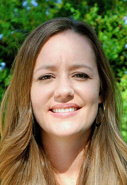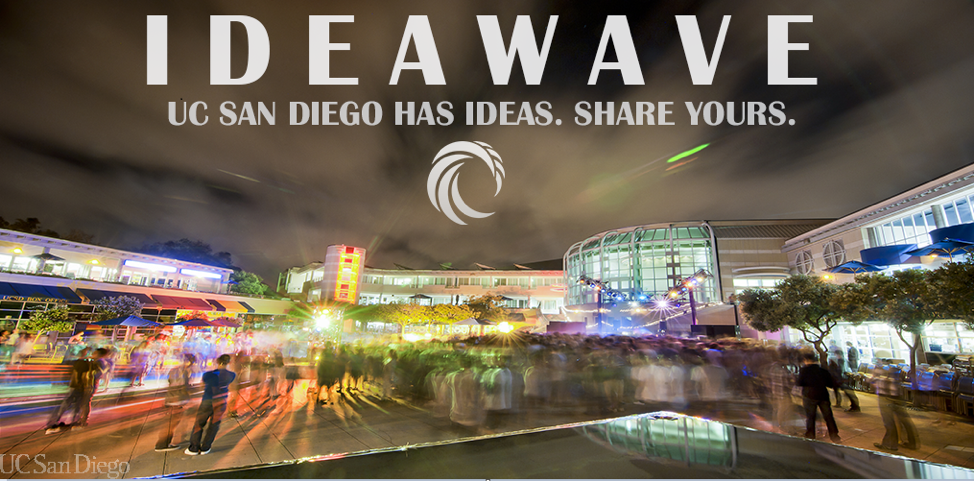By Melani Roberson. While we work from home, due to COVID-19, UC San Diego is using an innovation platform to gather employee feedback on how their work is transitioning (virtual or otherwise) in this new and uncertain environment.
The response has been overwhelmingly positive, even though it was expected that some people might feel frustration. (That’s OK; we all feel this way to some degree.) One of the main objectives of this feedback campaign is to help connect people with resources during work transitions, if they need it.
Is it odd to use an innovation tool this way, rather than a simple survey instrument? Not at all! Effective solutions can be generated quickly when groups are asked, within a constrained period of time, to tackle a problem and find a solution. This is called crowdsourcing and it’s an important technique to foster innovation.
IdeaWave is UC San Diego’s crowdsourcing/innovation platform. It was launched almost five years ago and is a licensed product from Hype Innovation. I am the IdeaWave program manager in the Office of Operational Strategic Initiatives.
At UC San Diego, we are using IdeaWave to crowdsource any number of innovative approaches: collecting ideas for initiatives to include in a strategic plan, making space for dialogue about inclusive excellence, doing a gap analysis on process mapping, and validating project deliverables, to name just a few.
With IdeaWave, we primarily use ideation campaigns, although we are very flexible in how we allow the tool to be used. Campaigns are short, usually three-week, topic-focused efforts to ideate on a specific problem. In general, a campaign is identified as one of five types:
- Creative: Diverse opinions collaborating to develop something that doesn’t yet exist
- Problem solving: Using collective insight and diverse opinions to fix a known issue
- Discovery: Finding hidden insights and expertise from the corners of our organization or 3rd parties
- Testing: Testing a concept or idea with those likely to be impacted by its implementation
- Feedback: Gather feedback on current activities, with the goal to refine and improve
These campaign types set the audience’s expectations about what we plan to do with their ideas. For example, when we launch a creative campaign – attempting to design something that doesn’t even exist – it’s reasonable to expect that the timeline for implementing a chosen idea will be long. In a feedback campaign, where we ask for ideas about service or experience improvements, it’s reasonable to expect ideas to be implemented in a shorter timeframe.
Process over Product
Campaign topics should be aligned to the department or organization’s strategic focus areas. Strategic alignment ensures resources and attention are a good fit for the ideas that come out of the campaign. Once ideas are collected and the campaign closes, an evaluation and refinement phase occurs. At this point, the front end of innovation is complete. Now the hard work begins!
One of the reasons we chose Hype Innovation was because they provide highly responsive and skilled backend consultative support. It is a common misconception that if you just put an innovation tool in place, suddenly the creativity will flow, new things will emerge, and those things will get done. It actually takes a proven process to move quality ideas to implementation and to build a program that has the support of your organization. By contrast, gathering ideas and doing nothing with them erodes trust in your entire effort and people will be less likely to share ideas the next time you ask for them.
The back end of innovation is where the ideas are either immediately implemented (“quick wins” that can help build trust in the project), or moved into a concept-development phase so that a business case can be made. Resources are assigned to the selected concepts and moved into a project phase. Sometimes idea implementation can take years, so communication to the original idea submitters and audience goes a long way to maintaining trust and engagement.
Quality over Quantity
There have been times when we run campaigns, and hundreds of ideas will be generated. The truth is, in crowdsourcing, we’d rather have one great idea than 99 badly conceptualized or ill-fit ideas. So how do you get quality ideas? This is where the difference between surveying and crowdsourcing becomes very apparent:
- Quantity of ideas does not mean better ideas
- Number of people who participate does not mean better ideas
- Idea generation without collective input does not mean better ideas
In surveying, the number of participants and the amount of responses is really important from a statistical reliability standpoint. With crowdsourcing we’re looking for a dialogue, a conversation about submitted ideas. Through commenting we leverage the collective genius. Ideas may be good in isolation, but when others weigh in, they can become great – or completely sifted out by the crowd if deemed not viable.
I am often asked, “Why was your participation not higher?” or “If only x number of people participated, then that is not representative.” The answer to the first question is that the people we want to participate are those who find the question relevant. The response to the second statement is – true! Crowdsourcing is not surveying, but they can work very well together in partnership for different results.
Community Graduation over Top-Down Mandates
Top-down mandates certainly have their place. But when the situation is appropriate, the “community” or campaign audience can determine the best ideas that should rise to the top. When assessing a campaign, it’s important for us to look at community graduation of an idea: how many votes did it get, how many comments does it have, and even how many visitors. All of these can lead to an idea turning into a “Hot! Idea” if the pre-determined thresholds are hit. In the end, this can help narrow down which ideas the evaluation team should seriously consider.
Real Examples over Fluffy Concepts
At UC San Diego we primarily have used this crowdsourcing platform for time-bound, topic-focused, campaigns. We have supported everything from campaigns for small departments with approximately 30 people to campaigns including the entire campus community of approximately 65,000 faculty, staff, and students. Here are some examples of real campaigns:
- How should student-centeredness look and feel at UC San Diego? A campaign aimed at helping to define what “student-centeredness” is, based on real feedback from faculty, students, and staff
- Building the UC San Diego Strategic Plan for Inclusive Excellence. A portion of an enormous effort to gather feedback and create a plan for a more diverse and inclusive UC San Diego
- Small Changes, Big Impacts. A campaign focused on low- or no-cost process improvements in the Registrar’s Office
- Give us your BEST ideas on how we can improve in Mechanical and Aerospace Engineering. A student experience improvement campaign
- Making UC San Diego Health Your First Choice. A validation and testing campaign that helped support the myriad efforts that UC San Diego Health was planning for the next 18 months
We’ve also used the platform in unique ways:
- Supported seven conferences by providing a collaboration space for ideation either before, during, or after the in-person event
- Advanced eight strategic plan initiatives
- Stood up four communication portals – these are always open “campaigns” where a group can communicate, post updates, and collaborate with each other at any time
- Assisted with two UC wide task forces
- Ran two application submission portals
By making the platform available for free to any group on campus to support their goals, research, and operational efforts, we have been able to grow our program over the last five years. We consider the growing awareness of IdeaWave one of the biggest indicators of success. By running all-campus campaigns several times per year, different groups on campus are aware of the tool and its power to engage groups in ideation on important topics. We’ve seen growth in the number of campaigns from only six campaigns in the 2015-16 academic year to over 20 campaigns launched so far in 2019-20!
Given the COVID-19 campus closure, we’ve received multiple inquiries from various groups that need to regroup and rethink how their work will continue. IdeaWave will continue to support UC San Diego through the global pandemic and beyond.
To read a more thorough history of our program, take a look at our UC San Diego Case Study.
 Melani Roberson is program manager, IdeaWave Program, Operational Strategic Initiatives, UC San Diego.
Melani Roberson is program manager, IdeaWave Program, Operational Strategic Initiatives, UC San Diego.



